Dog’s footprint and grass susceptibility to this disease
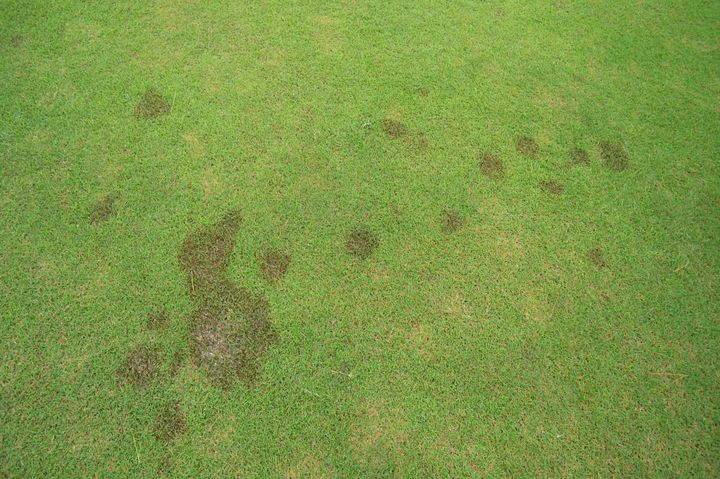 Dog’s footprint on manilagrass at Okinawa in August.
Dog’s footprint on manilagrass at Okinawa in August.I don’t like turf diseases. If there is any fun in them, for me, it lies in only two things. First, is it a particularly well-named disease? Second, how awful are the symptoms?
I enjoy learning disease names and finding those that have the most interesting names. Nothing against brown patch and yellow patch, but those are pretty bland. Dollar spot is more interesting, and elephant’s footprint even more so.
Then there are the symptoms. All turf diseases, if left unchecked, can make some hideous symptoms. In their standard form, however, I find some to be more hideous than others. Yellow patch, anthracnose, red thread—often present, but sometimes only visible to those actually looking for symptoms. Compare to a disease like large patch, which in its standard manifestation is monstrous.
Using those criteria of interesting names and hideous symptoms, one of my favorite diseases is inu no ashiato—dog’s footprint. The name is interesting, and the symptoms are moderately hideous. I was glad to see this new article by Tomaso-Peterson et al. about Curvularia malina inciting a new disease of warm-season turfgrasses in the southeastern United States. From the introduction:
A foliar disease of these warm-season turfgrasses is often observed following prolonged or significant precipitation events such as tropical storms and hurricanes. The disease manifests as distinct chocolate brown to black spots (2–15 cm diam) that appear on Cynodon dactylon or Zoysia matrella putting greens, fairways, and tee boxes. Under high disease pressure the dark spots may coalesce to form large, irregular areas of blighted turfgrass.
Is this the same as dog’s footprint, I wondered?
A Curvularia leaf blight affecting Zoysia spp. in Japan, referred to as dog footprint, shares symptomology to that observed on C. dactylon and Z. matrella in the southeastern United States … Based on these reports, our hypothesis is that the sterile fungus associated with Curvularia blight and causing similar symptoms in stands of C. dactylon and Z. matrella in the southeastern United States is a novel species of Curvularia.
The species was identified as Curvularia malina.
To date, C. dactylon and Z. matrella are the only golf course grasses from which C. malina has been isolated. Disease epidemics on Z. matrella appear to be more severe than on C. dactylon based on visual field observations. The disease is most prevalent in the spring and fall, which are normally characterized by moderate temperatures and ample precipitation. Symptoms may persist into the summer if prevailing environmental conditions remain favorable and the turfgrass experiences stress from intensive management practices.
So far so good. Dog’s footprint is more severe on Z. matrella in Asia than on C. dactylon. However, in Asia the disease is most prevalent in summer, or in conditions characterized by warm temperatures and ample precipitation.
Based on the results of our research, C. malina induces disease symptoms in warm-season turfgrasses similar to those associated with Curvularia leaf blight.
It seems dog’s footprint is caused by C. malina. Manilagrass (Zoysia matrella) can get lots of diseases, but in a tropical environment, this species is infected by few diseases, with the most common being dog’s footprint.
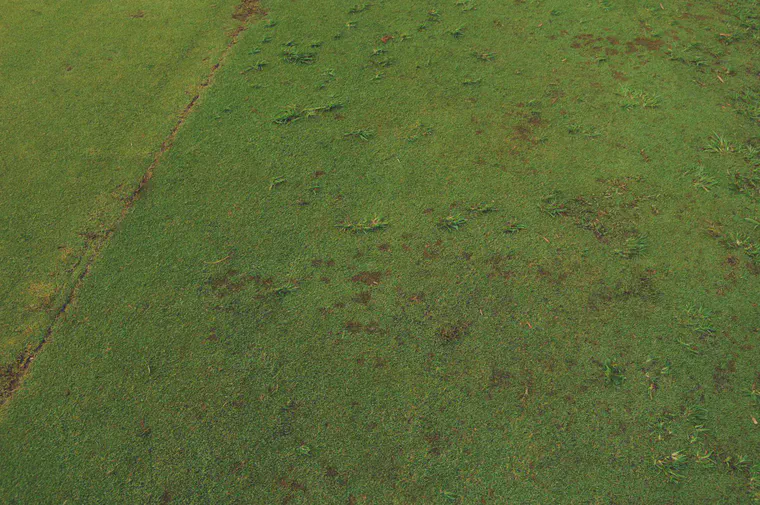
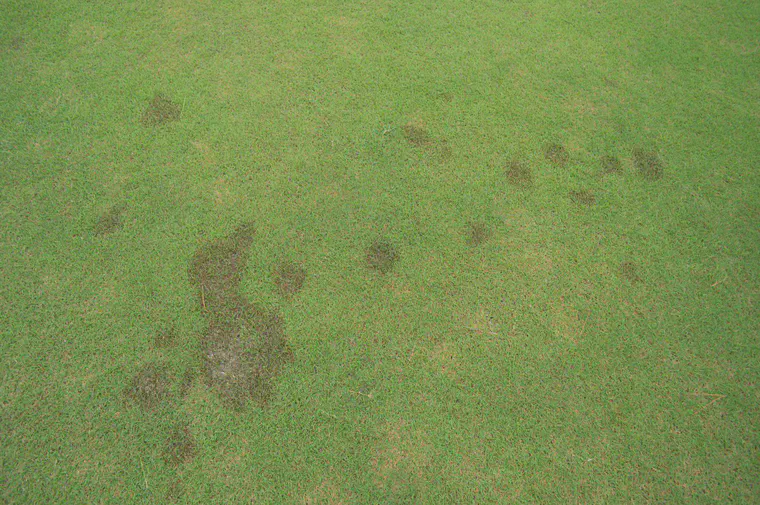
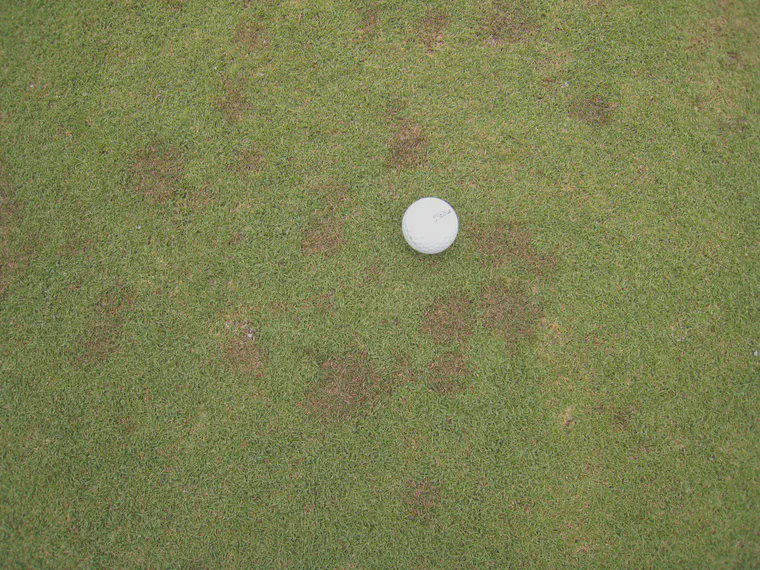
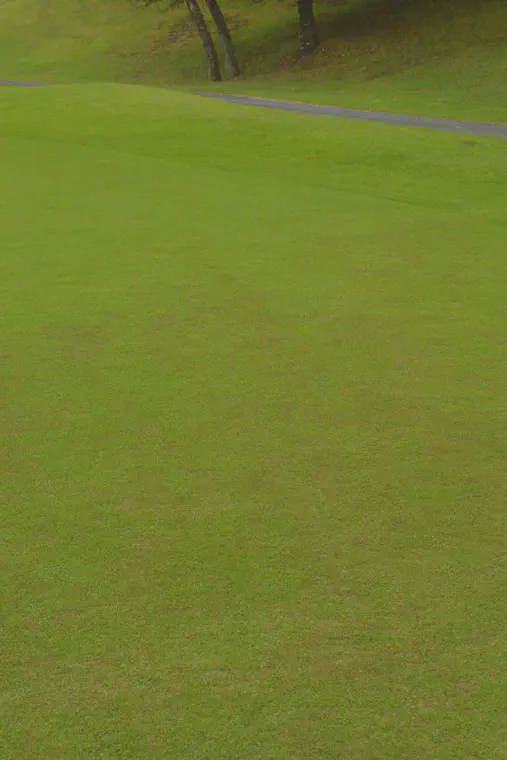
Those are typical symptoms. And they are all on a monostand of one type of manilagrass.
I’ve noticed that some manilagrass varieties are often showing dog’s footprint symptoms, and other varieties rarely do. I usually see this at two different locations in the same town. For example, lots of dog’s footprint at site X, and then an hour later at site Y, a slightly different type of manilagrass has no dog’s footprint.
One July in Japan, I saw this effect at one location, on a golf course fairway with a mixed stand of different Z. matrella (korai) varieties and with some patches of C. dactylon.
On one variety of korai, lots of dog’s footprint. On the Cynodon and other variety of korai, none.
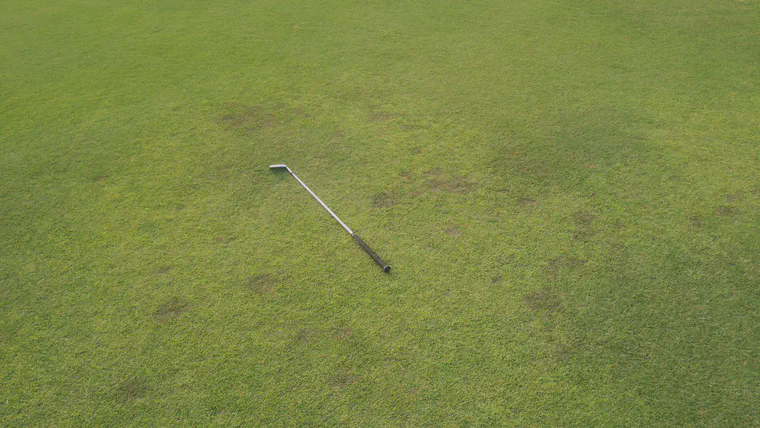
This disease is ubiquitous on susceptible varieties in East and Southeast Asia. Finding varieties that are less susceptible seems quite possible.
